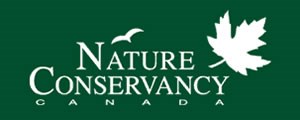On World Wetlands Day, the Nature Conservancy of Canada (NCC) brought attention to the plight of Canada’s wetlands. Since settlement in Saskatchewan the province has lost 70 percent of its original wetlands in settled areas of the province. We need to become better stewards of these ecosystems as they face threats from climate change, population growth and development.
Wetlands cover about 13 percent of Canada and these make up approximately one-quarter of all the wetlands left in the world.
Wetlands are special in Saskatchewan for several reasons:
• Saskatchewan has more migratory birds nesting in our wetlands than most other provinces in Canada.
• This is largely due to the area of our province called the Missouri Coteau, stretching from South Dakota and diagonally crosses the middle of the province to just past Lucky Lake.
• Saskatchewan has a lot of prairie surrounding our wetlands, which is ideal habitat for migratory birds.
NCC’s conservation scientists, Michael Burak and Cameron Wood, say wetlands matter, and we have a collective obligation to ensure their protection. Wetlands support our economy and well-being. They protect and filter our drinking water, provide fish and wildlife habitats, buffer communities from property damage by storing floodwaters, and also maintain surface water flow during droughts.
“We see the decline of wetlands affecting species at risk such as the endangered piping plover,” says Burak. In Saskatchewan, the 2006 International Piping Plover Breeding Census counted 440 pairs and 1,464 birds (circumcinctus subspecies) in the prairie regions. In 2016, only 278 pairs and 801 birds were detected. Remarkably, 20 percent of the world population of piping plover migrates to southern Saskatchewan on an annual basis starting in late April, staying until August.
Piping plover numbers on the prairies have dropped by 40 percent drop since 1996. Other species at risk affected by wetland loss include the yellow rail (special concern), northern leopard frog (special concern), Great Plains toad (special concern), buff-breasted sandpiper (special concern), horned grebe (special concern).
“Conserving wetlands is a big way we can stop that loss,” says Burak.
Our wetlands are disappearing. The global loss of wetlands is staggering. Since 1900, more than 64 percent of the world’s wetlands have been lost with about 50 percent of this loss occurring since 1970.
Conservation is a defence against the loss of more wetlands. To date the Nature Conservancy of Canada protected and restored wetlands nationally equivalent in size to the City of Toronto, and more than 16,000 acres (6,475 hectares) in Saskatchewan.
“Wetlands affect the health of surrounding forests, grasslands, and cities,” says Wood. “It is in all of our best interests to protect them.”
Facts:
• Saskatchewan has lost 70 percent of its original wetlands in settled areas of the province.
• As part of the Nature Conservancy of Canada’s 150,000 acres of conserved habitat in Saskatchewan, we have protected over 16,000 acres (6,475 hectares) of wetlands in areas with high densities of waterfowl and shorebirds in the province.
• Many species of birds rely on wetlands to feed and raise their young. Many of Canada’s Important Bird Areas (IBAs) occur in wetlands, including IBAs that are significant from a global and continental perspective because they provide critical feeding and nesting habitat for migrating birds.
• Wetlands, particularly peatlands (often called muskeg in Canada), play a major role in global carbon storage. Despite covering only three percent of the Earth’s land surface, peatlands store more carbon than all of the world’s forests combined. It’s been estimated that a Canadian peatlands hold approximately 147 gigatons of carbon; the equivalent of one-fifth of all the carbon in the atmosphere today. If this carbon vault was opened and released, there would be major consequences to the world’s carbon budget. It would also magnify the impacts of climate change across the planet.
Learn More:
The Nature Conservancy of Canada is the nation’s leading land conservation organization, working to protect our most important natural areas and the species they sustain. Since 1962 NCC and its partners have helped to protect 2.8 million acres (more than 1.1 million hectares), coast to coast. In Saskatchewan, the Nature Conservancy of Canada (NCC) has conserved over 150,000 acres (60,700 hectares) of ecologically significant land through land donations, purchases and conservation agreements.




